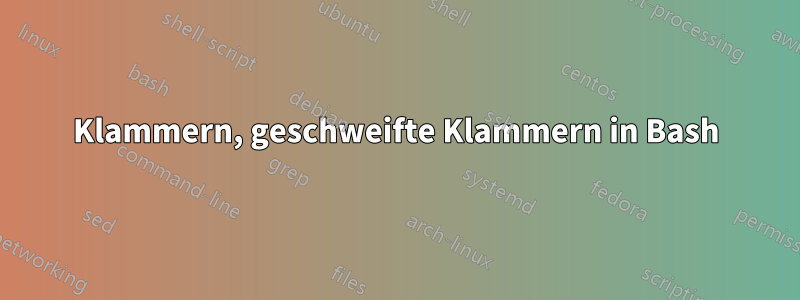
Hier ist das Rätsel:
Wenn ich mache:
touch file{1,2,3}
Es erstellt Datei1, Datei2, Datei3
Und wenn ich das tue
rm file[1-3]
Es löscht sie.
aber wenn ich es mache
touch file[1-3]
es erstellt:
file[1-3]
Warum?
Antwort1
Wenn Sie sich die Mühe gemacht haben, diemanpageanstatt Rätsel zu machen:
Brace Expansion
Brace expansion is a mechanism by which arbitrary strings may be
generated. This mechanism is similar to pathname expansion, but the
filenames generated need not exist.
...
Pathname Expansion
After word splitting, unless the -f option has been set, bash scans
each word for the characters *, ?, and [. If one of these characters
appears, then the word is regarded as a pattern, and replaced with an
alphabetically sorted list of filenames matching the pattern (see
Pattern Matching below). If no matching filenames are found, and the
shell option nullglob is not enabled, the word is left unchanged.
...
Pattern Matching
Any character that appears in a pattern, other than the special pattern
characters described below, matches itself. ...
The special pattern characters have the following meanings:
...
[...] Matches any one of the enclosed characters. A pair of
characters separated by a hyphen denotes a range
expression; any character that falls between those two
characters, inclusive, using the current locale's
collating sequence and character set, is matched.
file[1-3]wird in Dateien mit den Namen file1, file2, erweitert file3. Die Dateinamenerweiterung erfolgt nur, wenn übereinstimmende Dateien vorhanden sind. Wenn nicht, bleibt das Muster unverändert. Daher wird mit Dateien mit den Namen file1, file2, file3, file[1-3]zu erweitert file1 file2 file3. Ohne diese Dateien wird es nicht erweitert und bleibt als file[1-3]. Mit {...}müssen die Dateinamen nicht vorhanden sein, daher file{1..3}wird zu erweitert file1 file2 file3, unabhängig davon, ob die Dateien vorhanden sind oder nicht.


